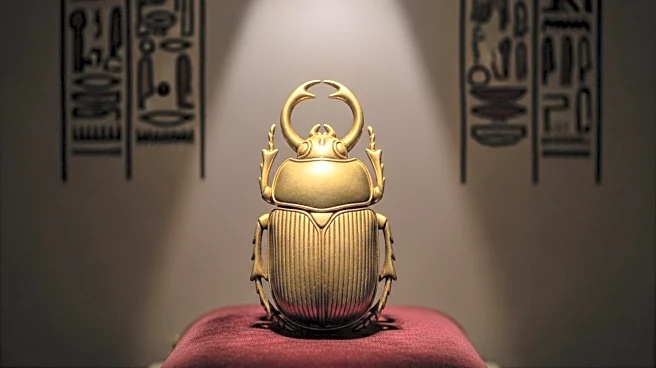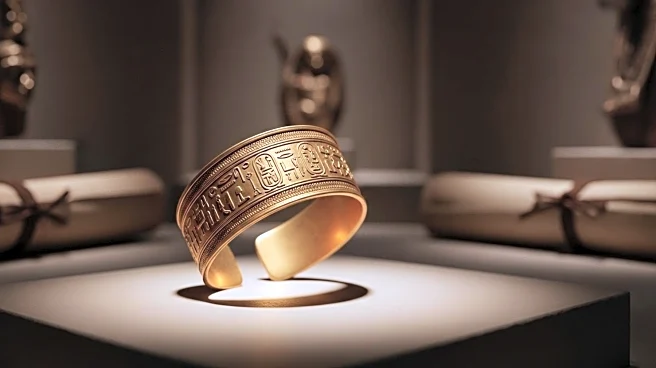What's Happening?
A 3,000-year-old gold bracelet, once owned by Pharaoh King Amenemope, has gone missing from the Egyptian Museum in Cairo. The bracelet, adorned with a lapis lazuli bead, was last seen in the museum's restoration laboratory. The Egyptian Ministry of Tourism and Antiquities has launched an investigation, involving law enforcement and the public prosecution office. Images of the bracelet have been distributed to airports, seaports, and land border crossings to prevent smuggling. The museum's director clarified that circulating images online are not of the missing bracelet but of another on display. The bracelet's disappearance highlights the ongoing issue of antiquities trafficking, with experts suggesting it could be smuggled, melted down, or end up in a private collection.
Why It's Important?
The disappearance of the bracelet underscores the vulnerability of cultural heritage sites and artifacts to theft and illegal trade. This incident could have significant implications for the global antiquities market, potentially increasing scrutiny and security measures at museums worldwide. The loss of such a historically significant artifact is a blow to Egypt's cultural heritage and could impact tourism, a vital sector for the country's economy. The situation also raises concerns about the effectiveness of current measures to protect and preserve ancient artifacts, prompting calls for enhanced international cooperation to combat antiquities trafficking.
What's Next?
The Egyptian authorities are expected to intensify their search efforts, possibly involving international law enforcement agencies to track the bracelet. The museum will conduct a thorough inventory of its artifacts, which may lead to the discovery of other missing items. This incident might prompt museums globally to reassess their security protocols. Additionally, there could be increased pressure on auction houses and private collectors to verify the provenance of ancient artifacts more rigorously.
Beyond the Headlines
The incident highlights ethical concerns regarding the ownership and trade of cultural artifacts. It raises questions about the responsibilities of museums and collectors in preserving cultural heritage. The potential involvement of international trafficking networks suggests a need for stronger legal frameworks and international agreements to prevent the illicit trade of antiquities.












